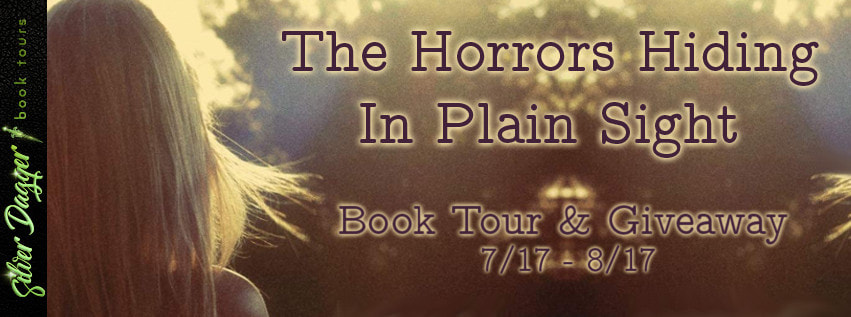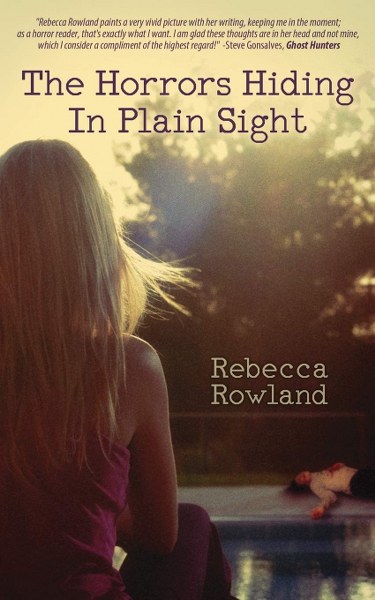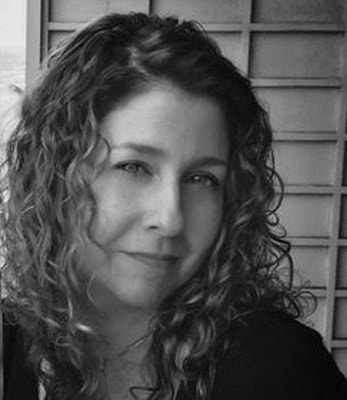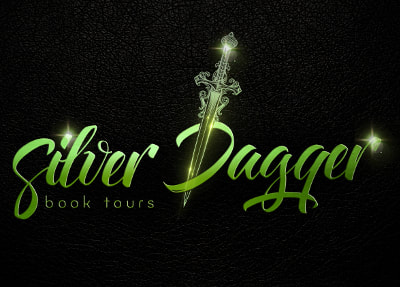The Horrors Hiding in Plain Sight
by Rebecca Rowland
Genre: Psychological Horror, Transgressive Dark Fiction, Short Stories
Three adolescent bullies discover that the vicious crime for which they were never charged will haunt them in unimaginably horrific ways; a dominatrix and a bondage fetishist befriend one another as one’s preoccupation grows to consume his life. A man persuades his wife to start a family, but her reluctant pregnancy comes with a dreadful side effect. A substitute teacher’s curiosity about a veteran teacher’s methodology provides her with a lesson she won’t soon forget. An affluent, xenophobic lawyer callously kills two immigrants with her car with seeming impunity; a childless couple plays a sadistic game with a neglected juvenile each Halloween. An abusive father, a dating site predator, a neglected concierge, and an obsessed co-worker: they are all among the residents of Rebecca Rowland’s universe, and they dwell in the everyday realm of crime and punishment tempered with fixation and madness. There are no vampires, zombies, or magical beings here; no, what lurk in this world are even more terrifying. Once you meet them, you will think twice before turning your back on that seemingly innocuous neighbor or coming to the aid of the helpless damsel in the dark parking lot. These monsters don’t lurk under your bed or in the shadows: they are the people you see every day at work, in the supermarket, and in broad daylight. They are the horrors that hide in plain sight, and they will unsettle you more than any supernatural being ever could.
Trigger Warning:
Contains graphic violence (though not continually) including accidental death, murder, and suicide; sexual content, and occasional graphic language. Sexual assault is implied but not described in a graphic nature. No animals are harmed.
Excerpt from “Bent” (second story, The Horrors Hiding in Plain Sight, Rebecca Rowland)
I. Jesse
Confucius said, “if you choose a career that you love, you’ll never work a day in your life.” I didn’t become a nurse because I like to help people. I didn’t become a nurse because I have an affinity for keeping cool in hectic situations or because I have a preference for soft-soled shoes with solid instep support. I became a nurse because it seemed like the most obvious transition after practically consuming anatomy books throughout my adolescence. To say that I was fixated would be an understatement. There were times when I wanted to peel the images from the glossy pages, drape them over my forearms like perfectly formed crepes, and carry them daintily to the solace of my bedroom where I could consume them still warm from the pan.
No, I didn’t enjoy anatomy book drawings like every other adolescent boy “enjoys” them—as if that isn’t the euphemism of the year—I mean, their ultimate purpose was by-proxy masturbation material of course, but not in the way you think. You see, I didn’t use the illustrations to view naked bodies. I used them to investigate. To formulate. To plan.
Sure, maybe it all stems from that somewhat traumatic incident when I was about eight and the babysitter was curled up on the couch, watching The Exorcist on HBO. I needed to pee, so I crawled out of my bed and crept down the hall in my Ninja Turtle footie pajamas and did my business. For whatever reason, I chose not to return straight to bed; instead, I padded further down the hall and tip-toed into the shag-rugged living room, pitch dark save for the strobing alien glow of the television. It was just my good fortune that the scene that was playing on the screen was the one where Ellen Burstyn is trapped in her daughter’s bedroom, furniture sliding along the floors and blocking the exits, while Linda Blair hacks away at her hoo-ha with the business end of a crucifix. I froze, completely transfixed by what was going on. And then Linda’s head turned in a way I had never seen a head turn. It was as if all of the joints and cartilage and muscle and bone in her body had melted. In that moment, I realized: there was nothing keeping a human body from becoming a life-sized Stretch Armstrong.
The funny thing is, the creepy back-bending spider walk scene wasn’t reintroduced by William Friedkin until the movie was rereleased in 2000. I can’t fathom what kind of effect that scene would’ve had on my sexual identity.
After that night, I became obsessed. I needed to know every detail of the human skeletal and muscular system. I dumped all of my GI Joes into a big pile on my bedroom floor and spent hours trying to bend them into yoga poses even the Kama Sutra would frown upon. Zarana and Zanzibar were my favorites, and looking back now, I can see why: unlike most of the hero Joes, those villains were half-naked, clothed in what I, a now rational and somewhat worldly adult, can only describe as “daddy bondage wear.” Zanzibar, with his swarthy eye patch, midlife crisis ponytail, and brown and silver codpiece, sported a ripped orange t-shirt like a bizarre fetish club stripper. Zarana, the decidedly more butch of the two, wore ripped jeans, a pink halter, and elbow-length leather gloves. The red knee pads draped over the tops of her boots are a detail crystalized in my memory, one that immediately came to mind when Samantha, my rich, blonde, dumb-as-rocks girlfriend in high school, decided to deliver a special present for my sixteenth birthday but insisted on kneeling on the throw pillows from her parents’ Sunpan Modern Bugatti grain leather sofa while doing it.
I spent hours, more likely months, of my tween years trying to bend Zanzibar and Zarana and their merry band of Tom Savini Sex-Machine-costume inspired action figures into human pretzels. After my father took me kite flying on Wells Beach one summer, I swiped the spool of string and repurposed it as fixing rope, manipulating tiny Joe bodies into contortionist tableaus. After weeks of careful, systematic stretching, I managed to turn Zanzibar’s head completely around until he was a fortune teller in Dante’s Inferno, forever doomed to look only behind himself and tickle his silver skull pendant with the tip of his hair. Unfortunately for Zarana, though, I became too impatient, and frustrated after weeks of trying to make her elbows entwine behind her back, she broke in two, her torso spilling a dried-out black rubber band and her splayed legs held together only by a tiny metal hook.
Twenty-five years later, I still have her legs. Sometimes I think about attaching an ornament hook to them and hanging them somewhere out of sight on the town’s Christmas tree, but that might give the police a clue to my identity, and it’s best not to be reckless after what I’ve done lately.
II. Rebekah
My name means “tied up” in Hebrew. I shit you not. When I was a kid, a bunch of us looked up our names in my mom’s old baby book shoved way in the back of the old, musty bookcase. Apparently, it had been a real party game in the late 1970s, deciding what to name your little bundle of post-Roe v. Wade joy. When we cracked open the spine, a few dog-eared pages pulled us right to our brood’s namesakes. My older brother, Matthew? His name means “Gift of God.” My sister Abigail? “Gives joy.” And my cousin Adam, his name translates into “Son of the red earth,” whatever the fuck that means. Rebekah? “Bound.” Restrained. Confined.
The irony kills me.
I didn’t set out to become a dominatrix. I mean, I know everyone in the sex trade says that, unless they’re lying and/or coked up so high they’d say just about anything to keep the camera rolling. When you’re sitting at that worn wooden desk in third grade, tracing the scratches and graffiti with your finger, all the while cursing the son of a bitch whose etchings cause your pencil to make holes in your papers because the surface below isn’t perfectly flat anymore, you don’t daydream about one day, maybe someday, wearing a latex cat suit and cracking a whip against some thirty-something-year-old district attorney whose suit jacket shoulder smells a little like sour milk and Fruity Pebbles. You don’t go shoe shopping with Mom the summer before you begin junior high and imagine the sales clerk licking the toe of your brown Candies t-strap loafer. You don’t fantasize about hog-tying your senior prom date and stuffing him in the trunk of his dad’s Dodge Aries while you stab your undercooked chicken cordon blue and listen to your best friend whine about her stiletto heels totally killing her feet.
I mean, maybe you do think about all of those things. But you don’t make it a career choice. When Mrs. Zahn, my high school guidance counselor, called me into her office in October of my senior year to have “the talk”—you know, since I hadn’t expressed any interest in applying to college, entering the military, or even pursuing a dead-end career as a Citgo convenience store attendant or IHOP waitress—I had nothing to offer her, not even a half-assed line of bullshit about wanting to become a kindergarten teacher or a famous fashion designer. I simply stared at her and waited out the five minutes of silence that hung between us until the bell rang for next period.
I loafed around community college for a few years, even honed a trade working for an engraver part-time to pay my rent. The place was called “Stanislau’s Personalized Gifts,” and Stan, the mild-mannered owner with the heavy Polish accent, was patient and taught me first how to engrave metal plates using a machine. After a few months, I was using the hand stencils and detailing calligraphy like an ancient stenographer on papyrus. I even tried my hand at stone etching a few times and seriously considered going into the tombstone design business. I still might. It’s an art, transcribing someone’s last identity onto a marble slab. I dabbled in wood carving a bit, too, and was even hired to create a set of “special edition” paddles for Pi Beta Phi’s Rush Week; the sorority liked my work so much that they let me keep one of them afterwards. I still personalize paddles for wedding shower gifts every now and then. It’s the gift that keeps on giving.
Dark fiction: Oh, the Horror! by Rebecca Rowland
I was always a fan of scary movies, even as a child. I grew up in the 70s and 80s, the Renaissance of the slasher film, and I can’t think of an entry in the jump scare genre that I didn’t watch before I turned twenty. So, of course, it should follow that as a writer, I’d pen the goriest, most ghoulish tales of sinister scariness. You are what you eat, after all. And yet, when I first labeled my short fiction as horror, I was asked, uh…where are the ghosts? The vampires? The sub-human creatures lurking in the darkness, preparing to eat our brains?
Sure, a few passages of supernatural ghastliness pop up in a story or two of mine: an evil doll who bites children, a pack of ageless serial killers gathering souls to maintain eternal life, a wendigo who lives under the bed (though, in truth, I like to think of that last one as realistic fiction). However, for the most part, my Horrors are the ones that are Hiding in Plain Sight: my characters usually exist in the real world, because to me, the adolescent who can callously bully a peer to death is a thousand times scarier than zombies tearing flesh from my shoulder. I suppose that’s because most of the time, readers of a speculative story can easily identify the threat, and when they lie awake in a dark bedroom at night, they can use rational thought to dispel any concerns over a swarm of giant murder wasps taking over their airspace (okay…bad example). Concerns over the neighbor next door possibly keeping a stranger hostage in his basement? Perhaps not so much.
All of my protagonists are flawed; many of them are terrible, sadistic human beings on whom I would never turn my back. But does that make the stories “horror?” I’ve penned my share of body squeamishness, but I’d much rather be classified as a “dark fiction” or “psychological horror” writer; I try to make the reader excessively uncomfortable rather than terrify them. The areas I feature most often are the places where we feel the most comfortable—a childhood home, a committed relationship, an intimate encounter—but they are also the places we are the most vulnerable. And of course, there is the scariest place of all: our own minds. My greatest fear is losing touch with reality; therefore, more than a handful of my main characters do just that. The fright factor comes from the unsuspecting reader tagging along for the ride.
Don’t get me wrong: the last movie I watched (and quite enjoyed) featured a Lovecraftian-like creature stalking an underwater drilling ship, a love child of The Abyss and Alien. Every now and then I might slip a little speculative horror into my writing, but what’s nice about the umbrella of “dark fiction” is it is flexible enough to meet every creepy-fiction connoisseur’s need. The problem occurs when some theorists classify horror and dark fiction as separate entities, believing that while the former employs supernatural elements, the latter is rooted in reality and is simply bleak and brooding. What then becomes of the serial killer trope? Does Hannibal Lecter evoke terror, or is he just unsettling? What about dark science fiction, the kind of storyline featured in one of my all-time favorite scary movies, Event Horizon (1997)? And what of cosmic horror? Is our fear of the unknown realistic, or fantastical?
I propose that horror, in all of its modalities, be included within, rather than separated from, the wider realm of dark fiction. On the island of misfit toys, the spotted elephant, square-wheeled train car, and Charlie-in-the-box differed from one another in their characteristics and intended recipients, but they shared a common need. Horror, dark fantasy, psychological thrillers, and sci-fi terror may use different methods, but their central intent is the same. Horror as a concept is ghettoized enough.
I was always a fan of scary movies, even as a child. I grew up in the 70s and 80s, the Renaissance of the slasher film, and I can’t think of an entry in the jump scare genre that I didn’t watch before I turned twenty. So, of course, it should follow that as a writer, I’d pen the goriest, most ghoulish tales of sinister scariness. You are what you eat, after all. And yet, when I first labeled my short fiction as horror, I was asked, uh…where are the ghosts? The vampires? The sub-human creatures lurking in the darkness, preparing to eat our brains?
Sure, a few passages of supernatural ghastliness pop up in a story or two of mine: an evil doll who bites children, a pack of ageless serial killers gathering souls to maintain eternal life, a wendigo who lives under the bed (though, in truth, I like to think of that last one as realistic fiction). However, for the most part, my Horrors are the ones that are Hiding in Plain Sight: my characters usually exist in the real world, because to me, the adolescent who can callously bully a peer to death is a thousand times scarier than zombies tearing flesh from my shoulder. I suppose that’s because most of the time, readers of a speculative story can easily identify the threat, and when they lie awake in a dark bedroom at night, they can use rational thought to dispel any concerns over a swarm of giant murder wasps taking over their airspace (okay…bad example). Concerns over the neighbor next door possibly keeping a stranger hostage in his basement? Perhaps not so much.
All of my protagonists are flawed; many of them are terrible, sadistic human beings on whom I would never turn my back. But does that make the stories “horror?” I’ve penned my share of body squeamishness, but I’d much rather be classified as a “dark fiction” or “psychological horror” writer; I try to make the reader excessively uncomfortable rather than terrify them. The areas I feature most often are the places where we feel the most comfortable—a childhood home, a committed relationship, an intimate encounter—but they are also the places we are the most vulnerable. And of course, there is the scariest place of all: our own minds. My greatest fear is losing touch with reality; therefore, more than a handful of my main characters do just that. The fright factor comes from the unsuspecting reader tagging along for the ride.
Don’t get me wrong: the last movie I watched (and quite enjoyed) featured a Lovecraftian-like creature stalking an underwater drilling ship, a love child of The Abyss and Alien. Every now and then I might slip a little speculative horror into my writing, but what’s nice about the umbrella of “dark fiction” is it is flexible enough to meet every creepy-fiction connoisseur’s need. The problem occurs when some theorists classify horror and dark fiction as separate entities, believing that while the former employs supernatural elements, the latter is rooted in reality and is simply bleak and brooding. What then becomes of the serial killer trope? Does Hannibal Lecter evoke terror, or is he just unsettling? What about dark science fiction, the kind of storyline featured in one of my all-time favorite scary movies, Event Horizon (1997)? And what of cosmic horror? Is our fear of the unknown realistic, or fantastical?
I propose that horror, in all of its modalities, be included within, rather than separated from, the wider realm of dark fiction. On the island of misfit toys, the spotted elephant, square-wheeled train car, and Charlie-in-the-box differed from one another in their characteristics and intended recipients, but they shared a common need. Horror, dark fantasy, psychological thrillers, and sci-fi terror may use different methods, but their central intent is the same. Horror as a concept is ghettoized enough.
Rebecca Rowland is the transgressive dark fiction author of the short story collection The Horrors Hiding in Plain Sight, co-author of the novel Pieces, and curator of the horror anthologies Ghosts, Goblins, Murder, and Madness; Shadowy Natures, and the upcoming The Half That You See and Unburied. Her writing has appeared in venues such as Coffin Bell, Waxing & Waning, and the
WiHM online collections The Ones You Don’t Bring Home to Mama and Final Girls with 20/20 Vision and has been anthologized in collections by Red Room Press, Transmundane Press, Forty-Two Books, Emerald Bay Books, Twisted Wing Productions, Thurston Howl Publications, J. Ellington Ashton Press, and Dark Ink. To surreptitiously stalk her, visit RowlandBooks.com.










Comments
Post a Comment